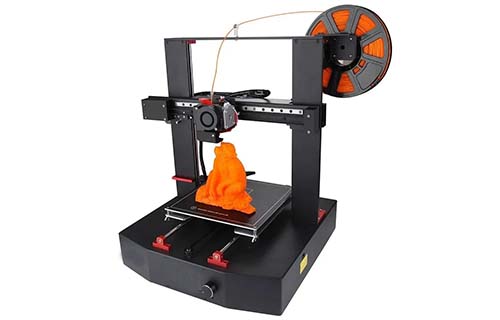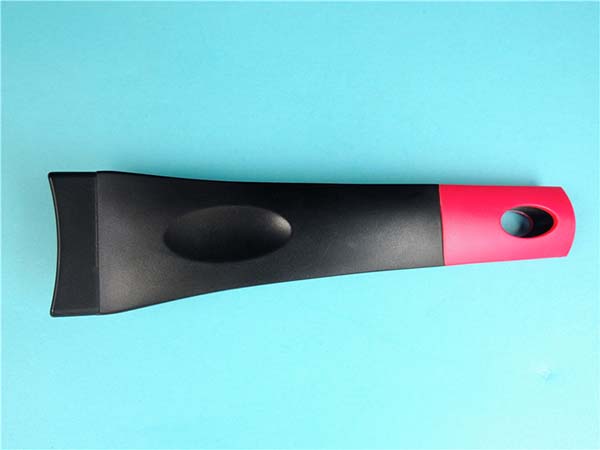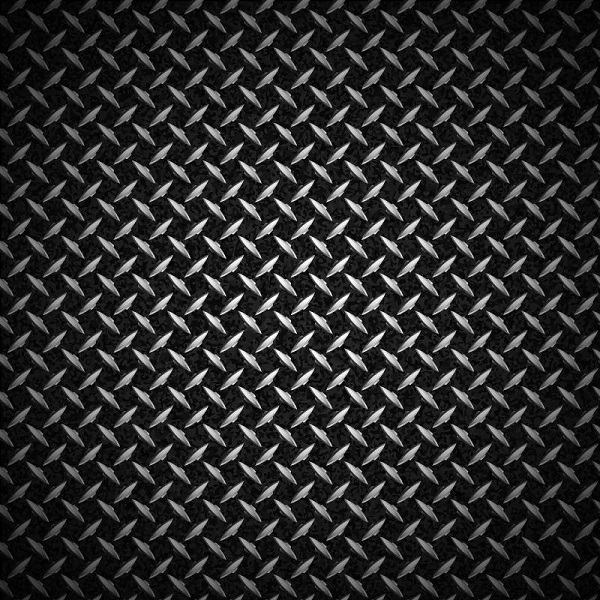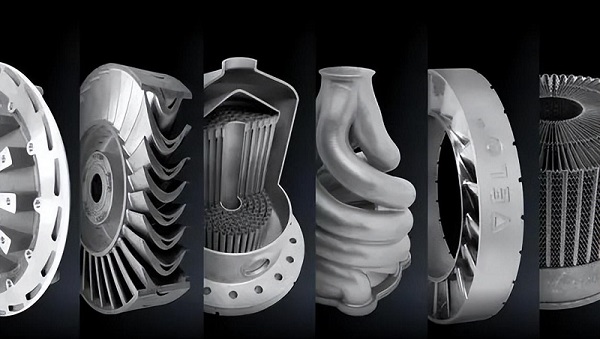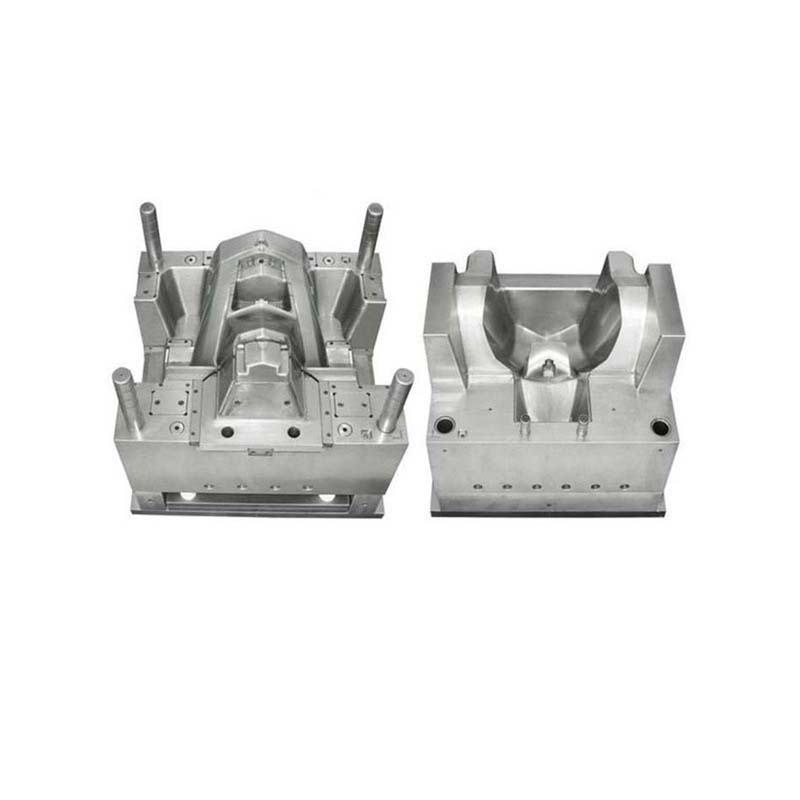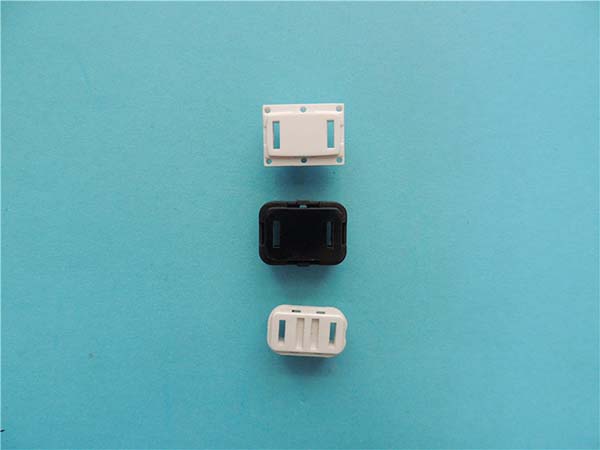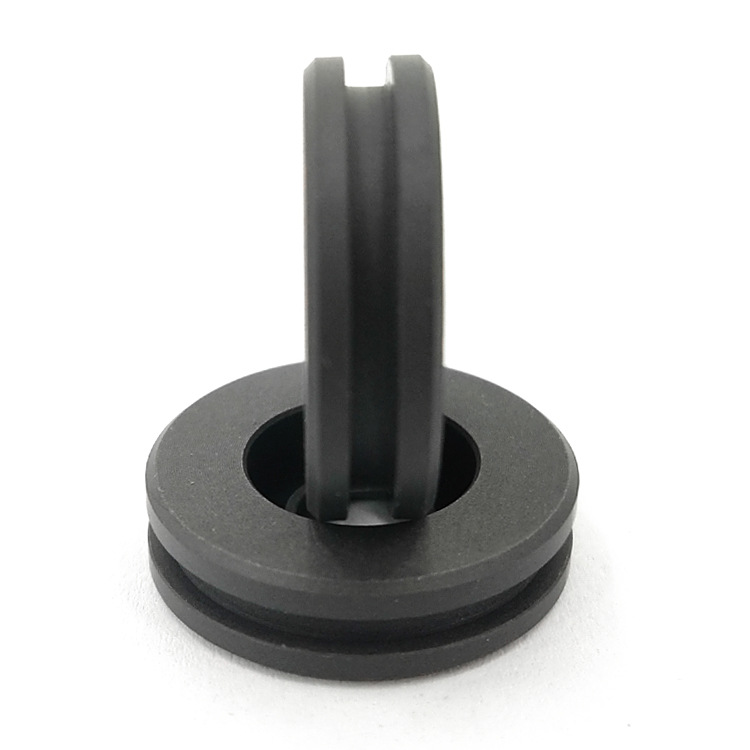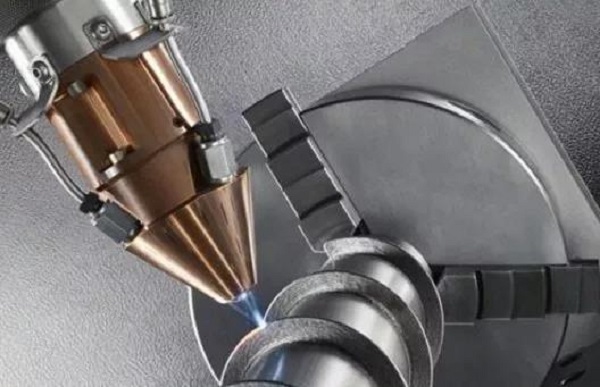If you’re exploring advanced manufacturing methods, you’ve likely come across “direct energy deposition additive manufacturing” (DED AM). At its core, direct energy deposition additive manufacturing is a 3D printing technique that builds parts by melting and depositing material—usually metal powders or wires—onto a substrate using a focused energy source like a laser, electron beam, or plasma arc. Unlike other AM processes (such as powder bed fusion), DED doesn’t require a pre-filled powder bed; instead, material is fed directly to the energy-material interaction zone as the part is built. This makes it ideal for repairing existing components, adding features to finished parts, or creating large, complex metal structures. Let’s break down how it works, its key benefits, and where it’s making an impact.
How Direct Energy Deposition Additive Manufacturing Works: Core Principles
To understand DED, it helps to walk through its step-by-step process—this isn’t just a “press print” technology; it’s a precise dance between energy, material, and motion control. Here’s a simplified breakdown of the workflow, with insights into what makes it unique:
- Substrate Preparation: First, the base material (or “substrate”)—often a metal plate or an existing part needing repair—is cleaned and secured to a build platform. For repair jobs (a major DED use case), the substrate’s surface might be milled or sandblasted to remove corrosion or damage, ensuring good adhesion with the new material.
- Material Feeding: Either metal powder (most common) or wire is fed into the system. Powder is typically delivered via a nozzle using an inert gas (like argon) to prevent oxidation, while wire is fed through a spool. The choice between powder and wire depends on the material (e.g., titanium wire for aerospace) and desired part properties (wire often offers higher material efficiency).
- Energy Source Activation: A focused energy source—usually a laser (for high precision) or electron beam (for high deposition rates)—heats the substrate and the incoming material to its melting point. The energy density is critical here: too little heat causes poor fusion, while too much can warp the part or create defects like porosity.
- Layer-by-Layer Deposition: The nozzle (or energy source) moves in a preprogrammed path (guided by CAD software) to deposit the molten material. Each layer fuses with the one below it, building the part up incrementally. Unlike powder bed fusion, DED can deposit material in any direction (not just horizontal layers), which is key for repairing odd-shaped components.
- Post-Processing: After printing, parts may need heat treatment to reduce internal stresses (common with high-strength metals like Inconel), machining to achieve tight tolerances, or surface finishing (such as grinding) for smoothness.
A real-world example highlights this process: In the aerospace industry, companies like GE Aviation use DED to repair turbine blades. The blade (substrate) is cleaned, and a laser-based DED system deposits a precise amount of nickel-based superalloy powder onto the damaged area. The molten material fuses with the original blade, restoring its shape and strength—all without replacing the entire expensive component.
Key Components of a DED AM System
Every DED system relies on four critical components working together to ensure quality and precision. Understanding these helps you evaluate which system is right for your application:
| Component | Function | Common Variations |
| Energy Source | Melts the substrate and feedstock; determines deposition speed and precision. | Laser (fiber, CO₂), Electron Beam (EB), Plasma Arc. |
| Material Delivery System | Feeds powder or wire to the energy-material interaction zone. | Powder nozzles (coaxial or off-axis), wire feeders (mechanical or pneumatic). |
| Motion Control System | Guides the energy source and material feeder along the CAD path. | 3-axis (simple parts), 5-axis (complex shapes), robotic arms (large components). |
| Atmosphere Control | Prevents oxidation of molten metal (critical for metals like titanium). | Inert gas chambers (argon/nitrogen), local shielding nozzles. |
For instance, a DED system used in medical implant manufacturing (e.g., hip stems) might use a fiber laser (for precision), a coaxial powder nozzle (to ensure even material distribution), and a 5-axis motion system (to create custom, patient-specific shapes). The atmosphere would be controlled with an argon chamber to keep the titanium implant free of contaminants.
Advantages of Direct Energy Deposition Additive Manufacturing
DED stands out from other AM processes for several reasons, making it a top choice for specific industries. Here are its most impactful benefits, backed by real use cases:
- Repair and Refurbishment Capabilities: This is DED’s biggest advantage. Unlike processes that only build new parts, DED can fix damaged, high-value components—saving time and money. For example, Caterpillar uses DED to repair hydraulic cylinder rods on construction equipment. Instead of replacing a rod (which costs $10,000+), DED deposits a layer of wear-resistant steel onto the scratched surface, restoring it to OEM specifications for a fraction of the cost.
- Large Part Production: DED doesn’t rely on a powder bed, so it can build parts much larger than those possible with powder bed fusion. The aerospace industry uses this to create large structural components, like titanium spars for aircraft wings. Companies like Sciaky (a leader in DED) have built parts up to 19 feet long using their electron beam DED systems.
- Material Efficiency: DED uses only the material needed for the part or repair, reducing waste compared to subtractive manufacturing (where up to 90% of material is cut away). For example, when making a custom metal bracket with subtractive methods, you might start with a 10-pound metal block and end up with a 1-pound bracket. With DED, you’d deposit just 1 pound of material—cutting waste by 90%.
- Material Versatility: DED works with a wide range of metals, including titanium, Inconel, stainless steel, aluminum, and even high-temperature alloys. It can also create metal matrix composites (e.g., aluminum reinforced with ceramic particles) for specialized applications like heat exchangers.
- Hybrid Manufacturing: DED can be integrated with subtractive machines (like CNC mills) to create “hybrid” systems. These systems build parts with DED, then machine them to tight tolerances in one setup. For example, DMG MORI’s Lasertec machines combine DED with CNC milling, allowing manufacturers to create complex parts with both additive and subtractive steps in a single process.
Common Applications of DED AM Across Industries
DED’s unique strengths make it indispensable in industries where repair, large parts, or material efficiency are critical. Here’s how key sectors are using it:
Aerospace and Defense
The aerospace industry is a early adopter of DED, thanks to its ability to repair and manufacture high-performance metal components. For example:
- Turbine Blade Repair: As mentioned earlier, GE Aviation uses DED to repair turbine blades in jet engines. A single engine blade can cost $50,000, so repairing it with DED saves millions annually.
- Large Structural Parts: Boeing uses DED to create titanium fittings for aircraft fuselages. These fittings are too large for powder bed fusion, but DED can build them quickly and with minimal waste.
- Military Applications: The U.S. Army uses DED to repair tank components in the field. Mobile DED systems can fix broken parts on-site, reducing downtime for military vehicles.
Medical
In medicine, DED’s precision and material versatility make it ideal for custom implants and surgical tools:
- Custom Implants: Surgeons use DED to create patient-specific hip and knee implants. For example, a patient with a rare bone shape can get an implant 3D-printed to match their anatomy, improving comfort and recovery time.
- Dental Restorations: DED is used to make custom dental crowns and bridges from biocompatible metals like cobalt-chromium. Unlike traditional casting methods, DED can produce a crown in a few hours (instead of days).
- Surgical Tools: DED creates specialized tools, like bone drills with custom tips, that are stronger and more durable than those made with subtractive methods.
Energy
The energy sector (oil, gas, and renewable energy) uses DED for repairing and upgrading equipment:
- Oil and Gas Pipes: DED repairs corrosion on offshore oil pipes. Instead of replacing a section of pipe (which requires shutting down production), DED deposits a corrosion-resistant alloy onto the damaged area.
- Wind Turbine Components: Wind turbine gearboxes have large, expensive parts (like shafts) that can be repaired with DED. Siemens Gamesa uses DED to extend the life of these components, reducing maintenance costs for wind farms.
- Nuclear Energy: DED is used to repair components in nuclear reactors, where high temperatures and radiation require materials like stainless steel and nickel alloys. DED’s precision ensures the repaired parts meet strict safety standards.
Automotive
While the automotive industry primarily uses other AM processes (like FDM) for prototyping, DED is gaining traction for high-performance and custom parts:
- Race Car Components: Formula 1 teams use DED to create custom exhaust manifolds and suspension parts. These parts are lightweight (thanks to DED’s ability to create complex geometries) and strong enough to handle high speeds.
- Classic Car Restoration: DED repairs rare parts for classic cars that are no longer in production. For example, a 1960s muscle car with a broken engine bracket can have the bracket recreated with DED, using the original material (like cast iron).
Challenges and Limitations of DED AM
While DED is powerful, it’s not the right choice for every application. Understanding its limitations helps you avoid costly mistakes:
- Lower Precision Compared to Powder Bed Fusion: DED parts typically have a rougher surface finish and looser tolerances (±0.1 mm) than parts made with powder bed fusion (±0.01 mm). This means DED parts often need post-processing (like machining) to meet tight specifications. For example, a medical implant made with DED would need to be milled to ensure it fits perfectly in the patient’s body.
- Slower Deposition Rates for Small Parts: While DED is fast for large parts, it’s slower than powder bed fusion for small, detailed components. A small gear that takes 30 minutes to print with powder bed fusion might take 2 hours with DED.
- Material Costs: Metal powders and wires for DED can be expensive—especially high-performance alloys like Inconel. For example, Inconel powder costs around \(150 per pound, compared to \)2 per pound for steel. This makes DED less cost-effective for low-value, high-volume parts.
- Skill Requirements: Operating a DED system requires specialized training. Technicians need to understand how to adjust energy settings, material feed rates, and atmosphere control to avoid defects. A lack of skilled operators can lead to failed prints or low-quality parts.
- Size Limitations (for Some Systems): While DED can build large parts, some systems (especially those with fixed platforms) have size limits. For example, a tabletop DED system might only handle parts up to 1 foot in size, while a robotic DED system can handle parts up to 20 feet.
Key Facts and Data About DED AM (E-E-A-T Authority)
To back up the claims in this article, here are verified facts and data from industry reports and 权威 sources:
- Market Growth: The global DED AM market is projected to grow from \(480 million in 2023 to \)1.2 billion by 2030, with a CAGR of 14.3% (Source: Grand View Research). This growth is driven by demand from aerospace and medical industries.
- Material Efficiency: DED reduces material waste by 70–90% compared to subtractive manufacturing (Source: ASTM International, the organization that sets AM standards).
- Repair Cost Savings: The U.S. Department of Defense estimates that DED saves $2–3 million per year on repairing military equipment, compared to replacing parts (Source: DoD Additive Manufacturing Roadmap).
- Deposition Rates: Electron beam DED can deposit material at rates of up to 10 pounds per hour, while laser DED typically deposits 0.5–2 pounds per hour (Source: Sciaky, Inc.).
Yigu Technology’s Perspective on Direct Energy Deposition Additive Manufacturing
At Yigu Technology, we see direct energy deposition additive manufacturing as a game-changer for industries focused on sustainability and cost-efficiency. Its ability to repair rather than replace parts aligns with global efforts to reduce waste—critical for sectors like aerospace and energy, where components are expensive and resource-intensive to produce. We’ve also noted that DED’s hybrid manufacturing potential is underutilized; integrating DED with subtractive processes can streamline production and improve part quality. However, we believe the industry needs to address skill gaps to fully adopt DED—investing in training programs for operators will make the technology more accessible. Looking ahead, we anticipate DED will play a key role in circular manufacturing models, where parts are reused, repaired, and recycled—helping our clients reduce their environmental footprint while cutting costs.
FAQ: Common Questions About Direct Energy Deposition Additive Manufacturing
1. Is DED AM only used for metals?
No, while DED is most commonly used for metals (powders and wires), some systems can process ceramics and metal matrix composites. However, metal applications remain the most widespread due to DED’s ability to handle high melting points.
2. How does DED compare to other AM processes like powder bed fusion (PBF)?
DED is better for large parts, repairs, and material efficiency. PBF (e.g., SLM, EBM) is better for small, precise parts with tight tolerances. For example, a small medical implant would likely use PBF, while a large turbine blade repair would use DED.
3. Can DED be used for on-site repairs?
Yes, mobile DED systems exist—often mounted on robots or trucks—that can repair parts in the field. The U.S. Army and oil and gas companies use these systems to fix equipment without transporting it to a factory.
4. What is the typical lead time for a DED part?
Lead time depends on part size and complexity. A small repair (like a turbine blade tip) might take 1–2 days, while a large part (like a 10-foot aircraft spar) could take 1–2 weeks. This is faster than traditional manufacturing for custom or low-volume parts.
5. Is DED AM cost-effective for high-volume production?
Generally, no. DED is more cost-effective for low-volume, high-value parts (e.g., custom implants, repair jobs) or large parts. For high-volume parts (e.g., automotive components), other processes like injection molding or PBF are cheaper.
